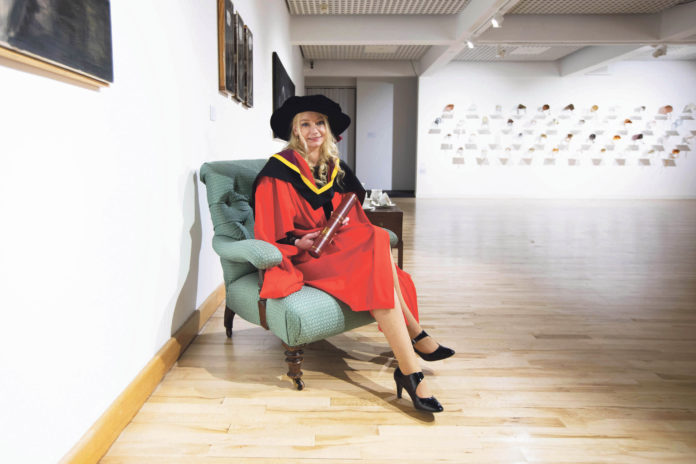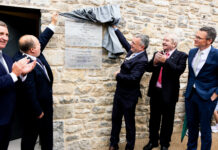
TEN members of the Minceir community died when fire swept through a Traveller halting site at Carrickmines, Co Dublin on October 10, 2015.
Local Traveller organisations rallied around the victims’ families to provide any supports they could.
If a similar tragedy were to happen in Limerick, it’s likely those supports would be far thinner on the ground, adding to the agony of families, according to Dr Sindy Joyce.
“There’s no local Traveller organisations in Limerick. That’s where the difficulty is,” she tells the Limerick Post.
A dedicated local organisation would help bind the Minceir and settled communities, she believes, as well as supporting Travellers.
“For example, it was many of the Traveller organisations that got together and supported the families affected by the Carrickmines tragedy – whereas, it would be difficult if it had to happen in Limerick,” Joyce says.
She is a proud “indigenous Minceir” whose family hail from West Limerick.
Presently engaged, and living in Castletroy, she recently became the first-ever Traveller person to graduate with a PhD.
The achievement is no doubt historic and, regardless of how you look at it, it remains an astonishing feat.
While graduating was “absolutely amazing”, Joyce agrees that her standing as “the first” reminded her of the daily “uphill battle” her community faces.
It was, she maintains, a “bittersweet” day.
“There was a sense that I was the first and that was sad in a way. I’d love to see a day where it won’t be news; that it will just be an ordinary thing.”
She has set a precedent she hopes others in her community will now follow: “A lot of young Travellers have approached me and they’re talking about becoming doctors etc, so, it’s about getting those ideas into their heads, that they can do it.”
The next generation “need to see Minceirs in government jobs; in journalism; in the media; in teaching; in the gardai; in the judiciary… where it becomes normal in society”.
However, she feels that little has changed after decades of a lack of trust between settled and Traveller communities.
“It’s very stagnant,” she says.
Joyce experienced an idyllic, carefree childhood, moving from place to place, within her family’s traditional “nomadic” culture. However, for some of the younger generations in her community, who were born unhitched from these same Traveller traditions, life has been grim.
“We have the same mortality rates as we did in Ireland in the 1940s. It’s 2019, and yet still, over 50 per cent of us don’t make it to the age of 65,” Joyce explains.
Many of her community’s deaths are from “respiratory diseases” and “high rebates of TB” due to damp and substandard halting site accommodation.
Living next to dumps and pylons can also “take a toll” on a person’s health.
She refers to this as “environmental racism”.
In 2017, the government formally recognised Travellers as an ethnic group, but the community faces many challenges.
“There are still halting sites around Limerick not fit for anybody to be living in. They’re dilapidated, they haven’t been serviced.
“Limerick City and County Council are one of the councils that haven’t spent their Traveller accommodation budget.”
A key recommendation in the 2010 All Ireland Traveller Health Study was that at least 1,000 transient halting sites be constructed across the country. However, Joyce reveals only fifty of these have been built.
Suicide remains a scourge on her community.
The reasons are “complex and multi faceted” – but the main sources of anxiety among young Traveller men especially, is due to “discrimination; lack of access to education and services; living conditions; and, a general sense of hopelessness when you are separated and cut off from everything else in society”.
Dr Sindy Joyce, one of 13 offspring, tragically reduced to 11, confirms with a nod that she has “personal experience” having lost two close family members by suicide.
She says three young Traveller women died by suicide six weeks ago in different parts of the country, “all in the space of five days”.
“The suicide rate for Traveller men is seven times higher than the general population. It’s is six times higher for Traveller women.”
There are similar suicide rates in the aboriginal community; However, Joyce says that, unlike humans, suicide doesn’t discriminate.
“Ireland has the highest suicide rate in Europe at the moment, which is damning in itself. It’s a crisis for the entire country, not just within the Traveller community,” she adds.
There are other pitfalls for the community: “Less than one per cent of the Traveller community goes on to third level education”.
Despite it all, she embraces the positives.
She says she is looking forward to the day Senator Collette Kelleher’s Culture and Education Bill is passed into law.
The proposed legislation would make the teaching of Traveller history and culture mandatory on the post primary and primary school curriculum.
A mobile phone app is being designed to translate the indigenous Minceir “De Cant/De Gamman/Shelta” language into English, and vice versa, so as to encourage young Travellers, and other communities, to learn about their heritage, from “Whitesmiths” to “Tinkers” to Minceir/Travellers.
Dr Joyce has become that beacon of hope to others in her community.
Last April, President Michael D Higgins “rang up out of the blue” and appointed her as one of his advisors to the Council of State.
“It reflects the hope in the community that we can break out of barriers and reach places we once thought we unreachable,” she enthuses.
She is currently reworking her PhD into a book about Travellers daily experiences in Irish society.
Her hopes remain for “mutual respect and understanding” between Minceri and settled communities.
“We are talking now about the same stereotypes that were there 50 years ago. We need to move on,” she says.
“A lot of people will feel uncomfortable, but things can’t change until people feel that uncomfortable truth.”










